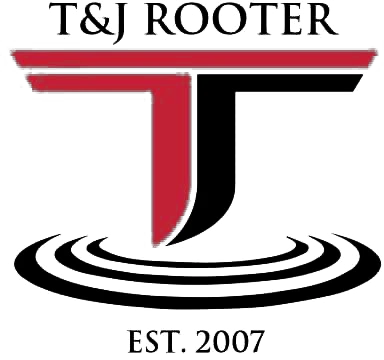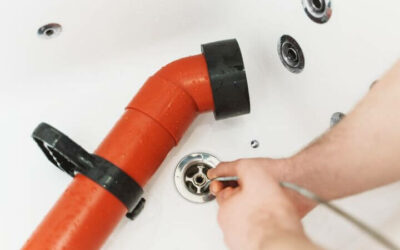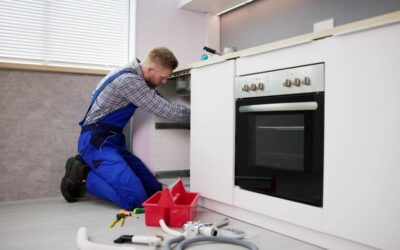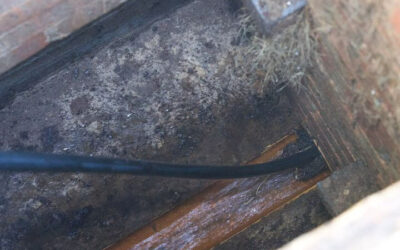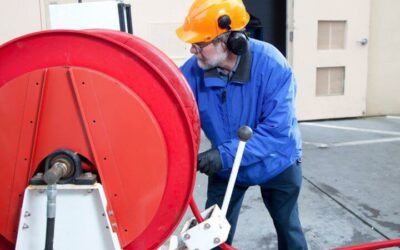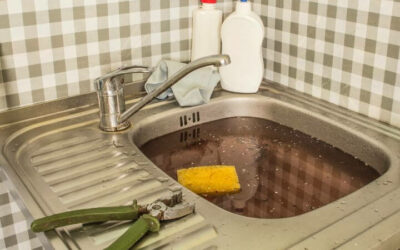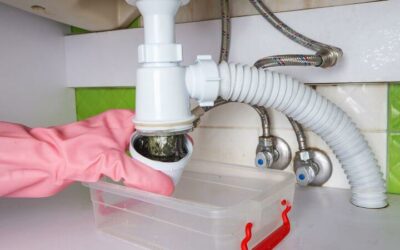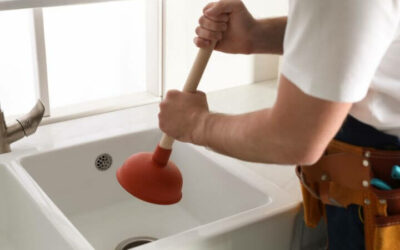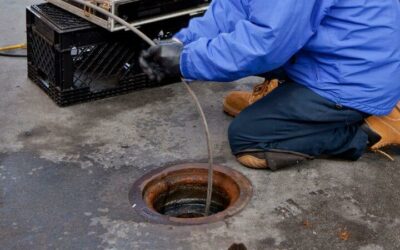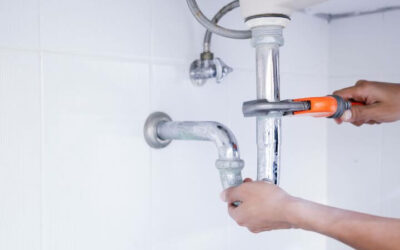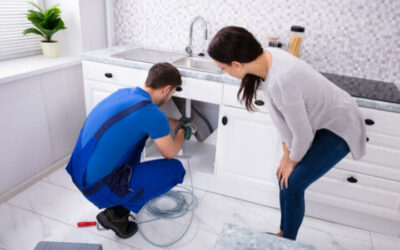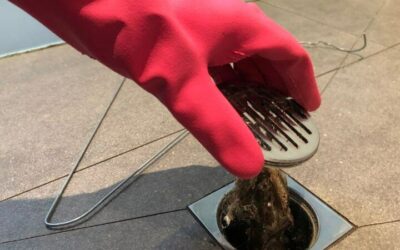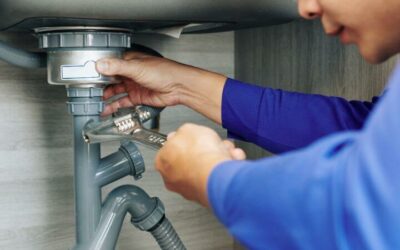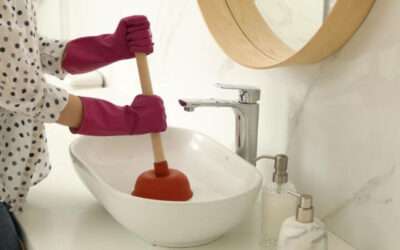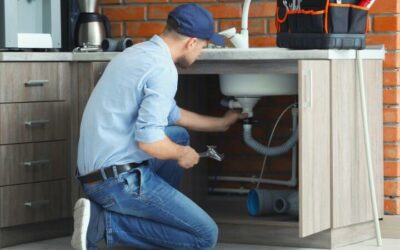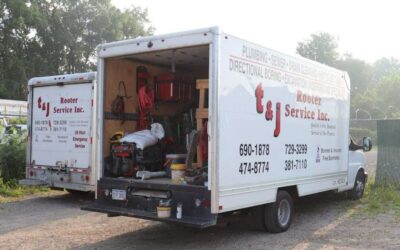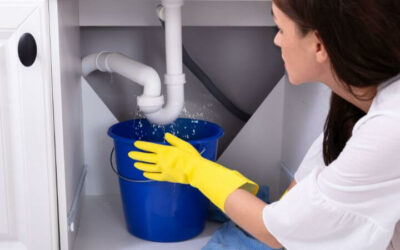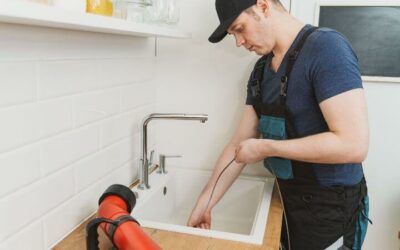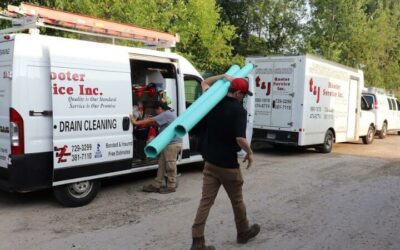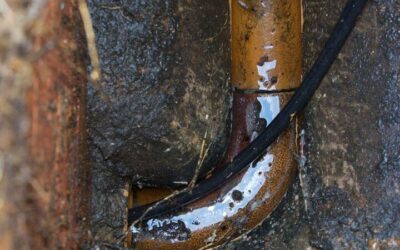If you’ve ever juggled with the issues of blocked drains or clogged sewage systems, and traditional methods just don’t seem to clear them, you might be interested in our deep dive into hydro jetting. This article covers from basics, history, practical applications, to the future of hydro jetting, a modern technique with its roots in the mining industry, now widely used in residential, commercial, and industrial sectors. Through water pressure and flow, hydro jetting can blast through stubborn blockages — an effective solution to many common plumbing issues. We’ll also illustrate the pros and cons of this method, compare it with traditional cleaning methods, and offers an insight into its rising demand in the market. Notably, businesses like T&J Rooter Service have made significant strides in hydro jetting and plumbing services, ensuring professional and reliable solutions to keep your drains and future sparkling clean! Hydro jetting, as a water-based method of clearing out drains and pipes, has seen significant uptake both in domestic and industrial settings. Crucial to understanding its increasing popularity are its operational principles, historical evolution and widespread significance in contemporary society.
Delving into the fundamental definition, Hydro jetting can be understood as a modern plumbing technique which makes use of high pressure stream of water to entirely wipe out all kinds of build-ups and obstructions in pipes and sewer lines. Unlike traditional methods, such as snaking, that only penetrate the blockages, hydro jetting comprehensively cleans the pipe’s interior by powerfully eradicating the root cause of the clogging. This process involves insertion of a high-pressure water hose equipped with a specialized nozzle into the drain. As the water is forced down the pipe at a powerful speed – typically 3500 psi to 4000 psi – it comprehensively removes all blockages, making the pipe function like new again.
Historically, hydro jetting derives from the much older technique of water jetting. High-pressure water pumps can be traced back to the mid 19th century, when they were used largely in mining settings. However, it wasn’t until the late 20th century that these water jets began to be used for drain and sewer cleaning purposes. The advent of technology provided jetting equipment with greater power, precision and ability to handle diverse sets of blockages. Modern hydro jetting is therefore a culmination of decades of technological advancement and practical testing. Significantly, advancements continue to be made in recent years, with the introduction of digital inspection techniques and environmentally safe jetting practices.
While hydro jetting originally gained traction in the industrial field, where large-scale operations gave sufficient scope for the technique’s full potential to be put to use, it has steadily permeated across different domains over time. Today, residential sectors also extensively rely upon hydro jetting for routine drain maintenance and urgent clogging solutions. Moreover, the wide-ranging flexibility of hydro jetting, which can remove anything from minor hair clumps to stubborn tree roots, makes it an ideal choice in both industrial and residential contexts. Further, since it only uses water under force, the method is environmentally friendly and leaves minimal scope for causing pipe damage, distinguishing it significantly from harsh chemical de-clogging processes.
Yet, while it has many advantages, it is critical to remember that hydro-jetting drains is not a do-it-yourself job. Irrespective of whether one is dealing with a residential or an industrial setting, hydro jetting requires expertise not just in operation, but also in judging whether the existing pipe condition can withstand the high pressure involved.
In this light, hydro jetting serves as an efficient, safe and comprehensive technique for keeping sewer lines and drains free from obstruction. Its relevance in the contemporary world stems not just from its high performance, but also its negligible environmental impact – a factor which will ensure its continued significance in the future.
Components Involved in Hydro Jetting
Hydro jetting, often referred to as water jetting, has emerged as a supremely efficient, safe, and eco-friendly method to unblock and clean different types of sewer systems, pipe systems, and drains. This one-of-a-kind type of plumbing operation leverages the outstanding potential of highly pressurized water to eliminate moss, grease, debris, roots, and any other obstructions encountered. Now, let’s delve into the integral components forming this operation and their specific roles in hydro jetting.
Breakdown of Hydro Jetting Equipment
A typical hydro jetting system is comprised of several key components. They are a resistor, high-pressure hose, pressure washer, water tank, and a jetting nozzle. The machine comes with a high-pressure pump which is extremely potent to convert normal water flow into a forceful water jet. Attached to this pump, you will notice a flexible hose that is highly reinforced. This is to ensure that the pressure of water generated is not constrained in any way and is disbursed properly. Also, the design of the hydro jetting machine is such that it accounts for safety and ease of maneuverability.
The Role of Water in Hydro Jetting
The essence of hydro jetting lies in the water being used. The use of water not only makes the process environmentally friendly but also makes it highly potent. Here, the water is so pressurized that it can slice through the stubbornest of blockages in no time. Also, the water is heated to certain temperatures. This helps to break down the hardened fat or grease deposits inside the pipe. Thus, the role of water in the hydro jetting process is more than just a medium; it is the very tool that enables the process.
Understanding the Function of Nozzles in Hydro Jetting
The nozzle is an integral component of a high-pressure water jet system. Without the right nozzle, the effectiveness of the water jet could be significantly impacted. Nozzles vary in shape and size and the selection of the right nozzle must be done judiciously. They can be classified into basic jet, penetrating jet, and rotary spinning jet. The pressure and the flow rate of water, the type of debris to be cleared, and the diameter of the pipe, among others, are the factors to be considered while choosing the right nozzle. Each of these nozzles is designed to address a particular type of clogging issue.
Importance of Pressure and Flow in Hydro Jetting
While the water’s role and the nozzle’s function are essential, the exact pressure and water flow rate play a tremendous role in hydro jetting. The pressure and flow rate determine the efficiency with which an obstruction can be removed. Usually, the pressure can range anywhere from 1,500 to 4,000 pounds per square inch. If the pressure is much higher than this, it could cause damage to the pipe. The correct combination of flow and pressure will result in an ideal jetspeed that will clean the pipe thoroughly. Hence, understanding the science behind this delicate balance between pressure and flow in hydro jetting can determine the success of the operation.
The Hydro Jetting Process
Hydro jetting, also known as water jetting, is an increasingly popular and effective method for cleaning out pipes and drains. By using high-pressure water jets, this process can efficiently remove build-ups and blockages, such as tree roots, grease, and accumulated debris, from inside pipelines. Typically, hydro jetting is employed prior to pipe lining procedures to ensure the pipelines are appropriately prepared.
Step-by-Step Overview of the Hydro Jetting Process
The hydro jetting process begins with a proper inspection of the pipe or drain to assess its condition. This typically involves the use of video equipment to get a detailed look at the interior of the pipe and identify specific blockages or areas of concern.
Next, a water source is connected to the hydro jetting machine. The machine, which includes a water tank, a high-pressure hose, and a specialized nozzle, generates a powerful stream of water that can effectively break up and remove obstructions within the pipe.
The high-pressure hose is then inserted into the pipe, and water is jetted out through small outlets in the nozzle to clear away the accumulation and mineral deposits. The process is carefully controlled by trained professionals, ensuring that the pipe is thoroughly cleaned without causing any damage.
Operational Safety Measures in Hydro Jetting
Safety is a paramount concern during the hydro jetting process. Professionals operating the machine must wear protective gear, including gloves, goggles, and boots, to protect against potential injuries from high-pressure water spray or debris.
Additionally, the pressure settings on the hydro jetting machine must be accurately adjusted according to the condition and material of the pipe to prevent any damage. There are specific guidelines on the appropriate pressure levels for different types of pipes, and failing to adhere to these can risk bursting or collapsing the pipe.
Role of Professionals in the Hydro Jetting Process
The hydro jetting process requires a good deal of expertise and experience. Trained professionals not only have comprehensive knowledge about different types of pipes and their handling, but they are also able to diagnose and troubleshoot potential problems during the process.
Professionals are also trained to operate the hydro jetting machine efficiently and safely, ensuring the optimal functioning of the system. They can assess the severity and location of the blockage, adjust the pressure settings accordingly, and ensure that the cleaned pipe is free of any remaining debris. This level of expertise ensures the chances of complications or damage during the process are significantly reduced.
Potential Challenges and Solutions in Hydro Jetting
While hydro jetting can be extremely effective in pipe and drain cleaning, it does come with potential challenges. For instance, if the water pressure is not correctly adjusted, it could cause harm to the pipes. Similarly, not correctly locating the blockage can result in ineffective cleaning or even damage to the pipe system.
To mitigate these risks, it’s essential to hire trained professionals who have extensive experience with the process. Such professionals possess comprehensive knowledge and understanding of the hydro jetting process, enabling them to quickly identify and address the potential issues associated. This ultimately leads to more efficient and reliable pipe cleaning solutions.
Benefits and Limitations of Hydro Jetting
Hydro jetting is an efficient solution to pipe blockages and system obstructions. As opposed to conventional ways of cleaning out sewer lines, hydro jetting provides a deep and thorough cleanse using highly-pressurized water streams. However, much like any technology it carries its cons. In this section, we’ll consider the benefits and drawbacks of hydro jetting, and how those aspects measure against traditional cleaning practices.
Advantages of Using Hydro Jetting
Firstly, hydro jetting is undeniably powerful. The method uses high pressure water to remove the stubborn build-up in pipes which can include sediment, greases, roots, and other debris. The sheer power ensures an extreme level of cleanliness which is not usually achievable using conventional line snaking methods.
Secondly, versatility is another crucial factor when considering the benefits of hydro jetting. The process is useful for a variety of pipe materials including PVC, concrete, metal, clay, and others. Thus, hydro jetting can be deployed nearly anywhere, whether in a commercial, residential, or municipal setting.
Lastly, hydro jetting impacts the environment far less than traditional methods. Realize that this process utilizes water to thoroughly clean pipes versus using harsh chemicals that could potentially harm the environment. The lack of chemical usage not only contributes less to pollution but also ensures a safer work area for professionals handling the process.
Potential Drawbacks and Solutions
However, there are a few potential drawbacks to hydro jetting to be aware of. Firstly, the force of the water can potentially damage pipes, particularly older or deteriorated ones. Therefore, it is recommended to have a professional inspect the pipes prior to using this method. The inspection will determine if the pipes can withstand the high water pressure.
Secondly, hydro jetting is typically a more expensive process than traditional snaking. Though the cost can initially look prohibitive, one should consider that the end solution provided by hydro jetting is often more long-lasting. Therefore, it can be viewed as an investment in the longevity of your pipe system.
Lastly, some people are hesitant about the amount of water usage involved with hydro jetting. While it’s true that the process uses a significant amount of water, remember that this is offset by the decreased need for future pipe cleanings and the elimination of the need for harmful chemicals.
Comparative Analysis: Hydro Jetting vs Traditional Cleaning Methods
When you compare hydro jetting with conventional pipe cleaning methods, the former offers several clear advantages. Hydro jetting is capable of more effectively and thoroughly clearing out pipes by addressing underlying issues which often go neglected. Traditional methods often offer a temporary fix but do not address the real issue which can lead to more frequent servicing needs.
In addition, hydro jetting is kinder to the environment as it doesn’t rely on harmful chemicals to get the job done. While the method does use a substantial amount of water, the overall impact is generally much less damaging than what traditional cleaners could cause.
Therefore, while the cost may initially seem higher, considering the long-term benefits and the overall impact, it might be valuable to consider hydro jetting as an option for intensive and effective pipe cleaning.
Practical Applications of Hydro Jetting
Hydro Jetting, also known as Water Jetting, is a process that employs a high-pressure flow of water to remove build-up and debris in tanks and lines. By utilizing high-pressure water streams, Hydro Jetting is capable of dislodging and removing residues stuck on surfaces. This technique finds extensive utility in both domestic and industrial circles and offers a versatile and efficacious solution for a broad range of cleaning problems.
First developed in the 1950s and the 1960s to clean wells, Hydro Jetting has undergone a considerable evolution, with its technology gradually refined and improved. Today, Hydro Jetting has numerous practical applications, some of which are discussed below.
Use of Hydro Jetting in Drain and Sewer Cleaning
Perhaps one of the most common uses of Hydro Jetting is in drain and sewer cleaning. Blocked drains and sewers can be a significant issue for households and businesses alike, causing potential health hazards and structural damage if not appropriately addressed. The traditional method of snaking is often not enough to tackle significant or persistent blockages. However, Hydro Jetting provides a much more thorough and effective cleaning option.
In Hydro Jetting, a high-pressure hose with a specialized nozzle is routed through the plumbing lines, and powerful streams of water, up to 4000 psi, are blasted through it to remove the grime build-up. This method can eliminate build-up from grease, soap, tree roots, and all types of blockages leaving the drains clean and free from any residue.
For persistent or recurring drainage problems, Hydro Jetting offers a longer-term solution as it fully clears pipes, reducing the chance of reblockage significantly compared to conventional methods.
Industrial Applications of Hydro Jetting
The robust and effective nature of Hydro Jetting makes it ideal for various industrial applications, particularly those where heavy-duty cleaning is necessary. Industries such as manufacturing, oil and gas, mining, and construction harness this technology for several activities, including cleaning and maintaining pipes and tanks, removing scale and particles, cleaning surfaces, and even cutting through concrete and metal in some instances.
In addition to being powerful, Hydro Jetting is also environmentally friendly, as it uses only water – without the need for any harsh or hazardous cleaning agents. This aspect makes it suitable for use in industries such as food processing and pharmaceuticals, where cleanliness is paramount, and the use of chemicals could be detrimental.
Innovative Uses of Hydro Jetting in Different Fields
In addition to its core practical applications, Hydro Jetting has also been aptly utilized in various innovative ways across different fields. It has proven useful in the field of archaeology, where researchers deploy it to remove dirt and reveal historical artifacts without causing damage.
In the health sector, water jetting technology is employed in devices used for wound debridement and cleaning. Here, the gentle, precise, consistent, and effective cleaning action of this technique proves advantageous over traditional ones.
Moreover, the controlled strength and precision of Hydro Jetting enable it to be used in various forms of artistic creation. For example, it has been adopted in sculpting and graffiti removal, proving its value beyond standard traditional cleaning contexts. Thus, the uses of Hydro Jetting are as diverse as they are vast – making it an invaluable tool across myriad sectors.
Future Trends and Developments in Hydro Jetting
Hydro jetting, an efficient method of cleaning and unclogging plumbing systems, has gained significant traction in recent years. It is recognized for its efficacy in removing heavy accumulations of grease, sediment, and other build-ups that commonly occur in pipes. Looking into the future, many trends and developments are projected to shape this field, ranging from advancements in technology to environmental considerations.
Advancements in Hydro Jetting Technology
The hydro jetting industry is set for massive transformations due to advancements in technology. One significant trend is the increase in automation and digitization within the sector. By incorporating digital elements in the hydro jetting process, plumbing companies could see major improvements in performance, cost-effectiveness, and safety.
For instance, one innovation in the pipeline is the advent of remotely controlled hydro jetting systems. These systems leverage IoT (Internet of Things) technology to monitor and control the operation from a distance. This could drastically reduce the need for manual labor, thus minimizing potential health risks for operators and speeding up the entire process.
Furthermore, there’s the development of smarter nozzles and jets. Future models will be capable of adjusting their water pressure depending on the nature and extent of the pipe blockage. This self-regulating feature prevents pipe damage caused by excessively high water pressure and ensures more efficient and effective cleaning.
Machine learning and artificial intelligence are two other technologies set to revolutionize the industry. Hydro jetting systems equipped with these capabilities could potentially identify and predict problem areas, making preventive maintenance easier and more accurate.
Predicted Trends in the Hydro Jetting Market
Looking at the broader hydro jetting market, an increasing demand for efficient and advanced cleaning methods is set to spur growth. Hydro jetting, with its ability to offer a comprehensive cleaning solution, is perfectly positioned to take advantage of this trend.
Also worth noting is a predicted rise in the demand for specialized services. As the technology becomes more refined and complex, companies offering specific hydro jetting services tailored to certain industries or pipe types could well emerge.
Furthermore, trends in economic and infrastructure growth, particularly in emerging markets, will provide additional stimulus to the hydro jetting market. As new buildings and facilities are constructed, the need for superior, durable and efficient plumbing systems will rise – delivering an increased demand for hydro jetting services.
Environmental Considerations for Future Hydro Jetting Techniques
Creating sustainable and environmentally friendly practices is a fundamental goal across all industries – and the same applies to hydro jetting. As such, another critical trend projected in hydro jetting’s future is the rise of eco-friendly techniques.
For example, the use of biodegradable additives in the water used for hydro jetting could minimize environmental impact. These additives can enhance the cleaning process without introducing harmful chemicals into the environment.
Another focus is on water conservation. Future hydro jetting technologies will need to optimize water usage, ensuring that no more water than necessary is used in cleaning pipes. These considerations are not only beneficial to the environment but they could also lead to significant cost savings for service providers.
To sum up, the future of hydro jetting looks bright, driven by technological advancements, market trends, and a turnout towards more environmentally friendly practices. As these trends take root, hydro jetting’s efficacy and appeal as a preferred plumbing solution are likely to keep growing.
1. What exactly is hydro jetting?
Hydro jetting involves cleaning pipes using high-pressure water streams to remove obstructions like grease, debris, and roots. This procedure helps maintain plumbing systems by avoiding clogs and build-ups.
2. How does hydro jetting differ from traditional plumbing methods?
Hydro jetting differs because it uses the high-pressure water jet to remove blockages, often effectively addressing the issue’s root cause. Traditional methods utilize mechanical action to push or pull clogs.
3. What kind of obstructions can hydro jetting handle?
Hydro jetting can handle various obstructions, including sediment deposits, tree roots, grease build-ups, and other debris obstructing the flow in the pipes, making this method highly efficient for pipe cleansing.
4. Is hydro jetting safe for all types of pipes?
Hydro jetting proves safe for most kinds of pipes. However, a professional should inspect frail, old, or damaged pipes before applying this method to avoid further issues.
5. How often should hydro jetting be performed?
The recommended frequency of hydro jetting mostly depends on the condition of the pipes and waste levels. However, for best maintenance, experts usually advise having hydro jetting once a year.
6. What are the environmental implications of hydro jetting?
Hydro jetting ranks as an environmentally friendly method of cleaning pipes. This process uses water pressure instead of harmful chemicals, making this approach safe for the environment.

